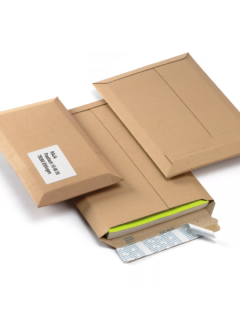Customised shipments – packaging for special tasks.
Goods with unusual shapes and large dimensions are difficult to pack in standard shipping packaging. These are so-called non-standard parcels, which require special treatment. How do you send such parcels?
Non-standard parcels pose a problem for both senders and carriers. They are difficult to pack and secure and equally difficult to transport in a way that guarantees that they will not be damaged. Information on non-standard shipments can be found in the terms and conditions of each courier company.
For their packaging, the most common packaging used is for special tasks, i.e. box pallets, 7-layer thick cardboard boxes, long cardboard boxes, including telescopic cardboard boxes.
What are non-standard shipments?
A non-standard parcel is an unsorted parcel, i.e. a parcel that does not move freely along the belt in a sorting plant. It is most often packed in an irregularly shaped box, in stretch film, has an uneven load distribution, etc. There is no single definition of a non-standard parcel, as each courier company defines the characteristics of such a parcel in its terms and conditions.
It is an atypical shipment in terms of: shape (it has protruding elements, cylindrical shape, goods on a pallet, parcels consisting of several separate parts), manner of packaging (in material preventing free movement on the sorter’s belt), length (pallets with base dimensions smaller than EURO, parcels 150-250 cm long), weight (exceeding 30 kg), fragility and brittleness (requiring special treatment).
The division of parcels into standard and non-standard is aimed at better organising them. This makes them easier to find and faster to reach their recipients.
How to pack goods with non-standard shapes?
Ideally, the goods should take on a fairly standard shape or close to one. You need to simplify the shape of the parcel – break the product down into parts, if possible, so that it fits into a cardboard box or boxes. And if this cannot be done, special packaging should be used.
-
Boxes
Wooden plywood crates are ideal for packing large yet fragile items. They are very sturdy, so they provide adequate protection. They are convenient to use because no tools or nails are needed to assemble them – tabs closed with a hammer are sufficient. They are up to 70% lighter than wooden boxes. They also fit in perfectly with the less waste trend, as they are reusable. They take up very little space when folded. They have a high resistance to moisture and other harsh conditions during transport. Transport boxes are available in various sizes and with a maximum load of 100 to 1,000 kg. You can also use crates, which are crates connected to a pallet. They can be transported using forklifts or pallet trucks.
They are used to transport heavy, fragile and valuable goods – mainly machinery and engines.
-
Thick cardboard boxes
The7-ply cartons are made of high-quality corrugated cardboard. They have triple-thickness walls for maximum protection. These cartons protect the shipment from impacts and temperature changes. They are ideal for shipping heavy items.
-
Long cardboard boxes
Long cart ons include telescopic cartons and those with a side opening. Telescopic cartons are tailored to the length of the item – the carton lid overlaps the bottom and adjusts. The telescopic lid doubles the thickness of the cardboard on the sides, so such cartons have great protective qualities. They are made of sturdy 3-ply cardboard – their strength is up to 20 kg.
Cartons with an opening on the long side are designed to protect narrow and long items. They are very practical due to the opening that makes it easy to insert and remove products. They protect the shipment from moisture and temperature changes and are tear and puncture resistant.
-
Cardboard tubes
Customised ship ments can also be packed in cardboard square tubes – so-called Quattropacks. Items can be placed in these with soft filling. This protects the goods from shifting during transport. The tubes can be stacked on top of each other, thus saving space in the warehouse. They are made of sturdy 3-ply corrugated cardboard that is resistant to mechanical damage and moisture. Thanks to their square base, they are stable and close easily – with an adhesive strip on both sides. They can not only be used for customised mailings, but also for archiving documents.
Using square tubes reduces shipping costs, as most carriers do not classify a shipment packed in a square tube as a non-standard shipment. And the surcharge for a non-standard package is usually between 50 and 100 per cent of the price of a regular shipment.














